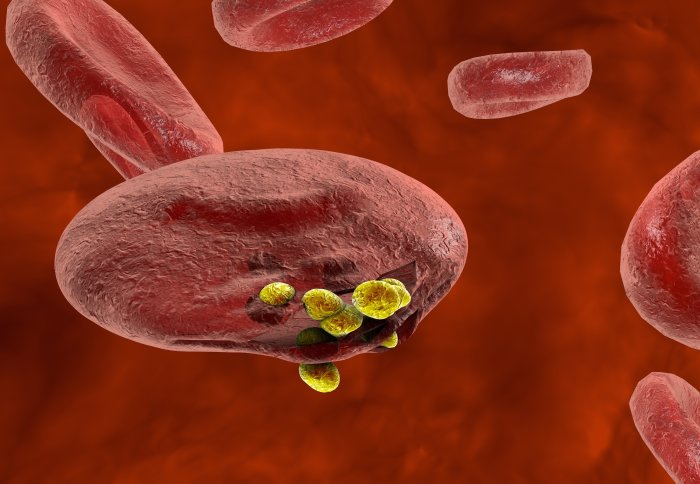Smart design could prevent drug resistance in new malaria treatments

Researchers have overcome malaria parasites’ resistance to potential new drugs by studying how it evolves.
In a paper published today in Cell Chemical Biology, scientists from the Francis Crick Institute and Imperial College London studied malaria parasites resistant to a promising new class of candidate antimalarial drugs. By analysing the structural changes behind the resistance, they identified novel compounds that were immune to this mechanism of resistance.
We were able to identify compounds that evade parasite resistance, making them ideal candidates for a potential combination therapy against malaria. Anja Schlott
Their findings could form the basis of the next generation of therapies for malaria that use a combination of drugs, which are urgently needed to counter emerging widespread resistance to existing treatments.
The study was led by Tony Holder’s lab at the Crick and Ed Tate’s labs both at the Crick and Imperial College London.
Dr Tony Holder, Group Leader at the Crick and senior author of the paper, said: “Evolutionary resistance to frontline treatment is inevitable, it’s just a question of time. By factoring resistance studies into early drug design, we can safeguard from resistance in the years to come. Rather than being on the back foot, we can plan for and prevent resistance.”
Interdisciplinary science
Malaria remains one of the world’s most devastating infectious diseases, claiming hundreds of thousands of lives each year. The team set out to study resistance mechanisms in the deadliest malaria parasite, Plasmodium falciparum.
In P. falciparum, the 'NMT' enzyme is vital for a range of functions including invading human red blood cells, where the parasites divide and multiply. Compounds that block this enzyme are currently being developed in the hope that they could form the basis of new medicines against malaria.
In this study, the team detected natural resistance in some P. falciparum parasites in the lab after just a few weeks of administering NMT inhibitors. By comparing the genetic makeup of the resistant and non-resistant strains, they were able to detect a small mutation. Using gene editing, they confirmed the mutation was responsible for the acquired resistance.
Using X-ray crystallography, the researchers visualised the structural change caused by the mutation. Making use of expertise in the Crick-GSK LinkLabs, the team used these structural insights to identify compounds that target a different part of the parasite NMT enzyme, and therefore evade the same resistance mechanism.
Anja Schlott, joint Crick/Imperial PhD student and first author of the paper, said: “Taking an interdisciplinary approach, we were able to identify compounds that evade parasite resistance, making them ideal candidates for a potential combination therapy against malaria.”
Wider implications
Although the study was focussed on the malaria parasite P. falciparum, NMT inhibitors – and the potential for resistance – are also relevant for a wide range of parasites and fungi. Identifying combinations of compounds that could work alongside NMT inhibitors will be an important step to combat the evolution of resistance in numerous infectious diseases.
Senior author of the paper Professor Ed Tate from the Department of Chemistry at Imperial, who runs a satellite lab at the Crick, said: “Our approach of studying resistance mechanisms during drug development has wide-reaching applications in medical science, including overcoming chemotherapy resistance in cancer
“The project was only made possible thanks to a unique combination of expertise including parasitology, chemical biology and drug discovery from all of our collaborators.”
The study was done in collaboration with researchers at the Seattle Structural Genomics Centre for Infectious Disease, Columbia University Medical Center, Medicines for Malaria Venture in Geneva and GlaxoSmithKline.
-
‘An antimalarial resistance mechanism leads to structure-guided identification of resistance-breaking Plasmodium N-myristoyltransferase inhibitors’ by Anja C. Schlott, Stephen Mayclin, Alexandra R. Reers, Olivia Coburn-Flynn, Andrew S. Bell, Judith Green, Ellen Knuepfer, David Charter, Roger Bonner, Brice Campo, Jeremy Burrows, Sally Lyons-Abbott, Bart L. Staker, Chun-Wa Chung, Peter J. Myler, David A. Fidock, Edward W. Tate, and Anthony A. Holder is published in Cell Chemical Biology.
Based on a press release by the Francis Crick Institute.
Supporters
Article text (excluding photos or graphics) © Imperial College London.
Photos and graphics subject to third party copyright used with permission or © Imperial College London.